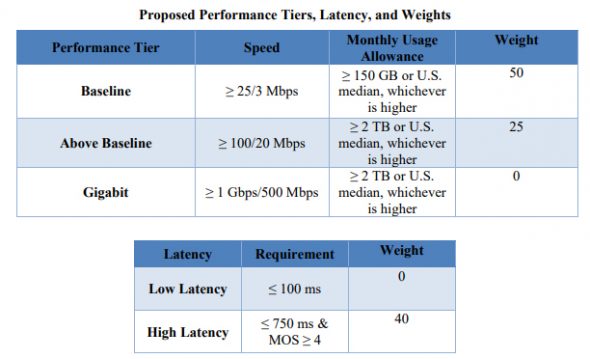 The FCC took the next step today toward establishing the $20.4 billion Rural Digital Opportunity Fund by adopting a notice of proposed rulemaking (NPRM) that outlines the parameters for that fund. The fund would cover some of the costs of deploying and providing broadband service to rural areas where broadband is not currently available.
The FCC took the next step today toward establishing the $20.4 billion Rural Digital Opportunity Fund by adopting a notice of proposed rulemaking (NPRM) that outlines the parameters for that fund. The fund would cover some of the costs of deploying and providing broadband service to rural areas where broadband is not currently available.
Funding would be dispersed over a 10-year period and would be awarded through a reverse auction. A point of contention about the Rural Digital Opportunity Fund pertains to the accuracy of the data that the proposal calls for using to determine areas eligible for funding.
FCC Rural Digital Opportunity Fund
The Rural Digital Opportunity Fund would essentially replace the initial Connect America Fund program for price cap carriers – a six-year program set to expire in 2021 that had a similar size annual budget. The new fund would target areas that lack access to 25/3 Mbps, with funding awarded through an auction that would be open to a wide range of service providers.
Funding would go to providers offering to deploy service at the lowest level of support, with a weighting system used to favor projects that would provide faster speeds or lower latency. As detailed in a draft NPRM, that system would be similar to the one used in the Connect America Fund II auction, which awarded rural broadband funding that was not accepted by price cap carriers. Winners in the Rural Digital Opportunity Fund auction would be required to deploy service at speeds of at least 25/3 Mbps.

The proposal calls for a two-phase approach. At least $16 billion would be awarded in the first phase, with the remainder awarded in the second phase.
Broadband Availability Data
Also today, the FCC adopted an order to establish new reporting requirements for Form 477, which broadband providers are required to file to indicate where they offer broadband service. That database has received harsh criticism in recent months, with virtually everyone agreeing that it overestimates broadband availability.
The order adopted today calls for providers to submit polygon maps showing where they offer broadband and to specify the speeds offered and technology used. Previously, providers submitted information by census block and an entire block was considered to have broadband even if only a single household could actually get it.
Critics have advocated the use of polygon maps, also known as shapefiles, as a better means of determining whether or not a specific location can get broadband.
Form 477 is particularly important because plans for the Rural Digital Opportunity Fund call for the commission to continue to use Form 477 data to determine areas eligible for funding. Several commissioners noted, however, that current timelines do not call for a database based on revised Form 477 data to be ready in time for the initial Rural Digital Opportunity Fund auction.
“I understand the impulse to move fast,” said Commissioner Jessica Rosenworcel. “But let’s commit to doing it right . . . The decisions we make now will direct funds for broadband for the next decade, so choosing where the funds go . . . without [correct] data is a problem.”
FCC Chairman Ajit Pai dismissed such arguments, likening them to someone saying that people with an illness shouldn’t be treated until the full number of people with that illness is known.
FCC Commissioner Geoffrey Starks suggested that the first phase of the Rural Digital Opportunity Fund should have had a smaller budget to “get service to those that need it the most while bringing the data collection . . . up to speed.”


